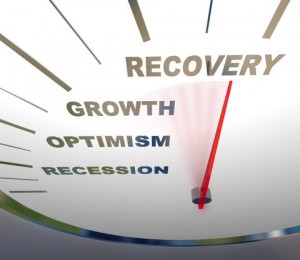05 Sep WHY IS THE MARKET ADVANCING?
The summer of 2012 has defied expectations.
On August 21, the S&P 500 hit a 4-year high. It climbed 3% in the first three weeks of the month following a 1.26% July gain. Across the past four weeks, the index’s total return has been just under 4%.1,2,3
Unexpected? You might say so. You can’t predict how the market will behave. This summer, stocks are managing to advance despite lingering threats.
Shouldn’t Wall Street be more pessimistic? After all, the “fiscal cliff” is drawing closer, the risk of a crack in the eurozone hasn’t exactly faded, and the European Central Bank and the Federal Reserve have not yet boldly responded to disappointing economic signals. Did Wall Street just collectively dismiss all of this in recent weeks?
Few saw this rally coming. The prevailing opinion – at least in spring – was that stocks would limp along through the summer, possibly retreating in reaction to news from Europe and subpar U.S. indicators. That was essentially the story in 2010 and 2011. In 2010, the S&P saw an April-May selloff and didn’t recover until that November. In 2011, a May-June selloff preceded a disastrous July; it took until February 2012 for stocks to get back to where they had been ten months earlier.4
This year, the S&P hit a peak in April and a valley in June – and just two months later, it returned to its YTD high.4
What factors are buoying the market? ECB President Mario Draghi’s (vague) pledge to do whatever is necessary to support the euro has certainly calmed some nerves. Investors continue to anticipate that the Fed will ease in the near term. The real estate sector appears to be healing, even as other economic indicators show sluggishness.
Some analysts think that the market simply wants to move higher – bullish sentiment has prevailed, even with all this uncertainty. In fact, a few analysts wonder if this summer’s advance mirrors a longstanding pattern.
Will history repeat? While it is far too early to answer “yes” to that question, it is interesting to note some past tendencies of “mature” bull markets. According to research from Bespoke Investment Group, we are now in the ninth longest and ninth strongest bull market since 1928 (nearly 1,300 days old with 110% appreciation).4
Mature bull markets witness corrections. In June, we more or less saw one – the S&P dropped 9.9% from its April high, actually 10.9% on an intraday basis. According to Bespoke, this was the twentieth bull market correction in the past 84 years. In the 19 previous corrections, the S&P took an average of 98 days to fully rebound from its low. This year, only 81 days were required.4
So what happened once the S&P recaptured its highs after these corrections? The index rose during the following month in 84% of these instances, with the average gain in those 30 days being 2.1%. Stretch that window of time out to three months, and data shows the index advancing 65% of the time with an average gain of 1.3%. Six months after such a rebound, the S&P was higher 84% of the time with the average advance at 5.5%.4
This data suggests that once a bull market is entrenched, a correction doesn’t shake the confidence of investors. There is still the perception of an upside.
A steepening VIX curve may be cause for concern. The CBOE VIX (the so-called “fear index” indicating expected volatility) fell below 14 in mid-August. This month, the VIX futures curve has shown a steepness not seen in several years, with VIX futures prices for October above 20 and in the vicinity of 25 for January. Some analysts wonder if complacency is about to give way to greater anxiety, since the VIX has shown longer-term volatility at a higher premium than short-term volatility.5
Yesterday’s statistics don’t equal tomorrow’s reality; nobody knows what the market will do this fall and winter. What we do know is that this summer, the markets have nicely exceeded expectations.
Kevin M. Nast is a Financial Planner and the President of NastGroup Financial in Northville, MI 48167. He may be reached at nastgroupfinancial.com or 248.347.1888. Kevin also services clients in Milford, Novi, Commerce Township, West Bloomfield, Farmington Hills and the surrounding metro Detroit area as well as 13 additional states across the US.
This material was prepared by MarketingLibrary.Net Inc., and does not necessarily represent the views of the presenting party, nor their affiliates. All information is believed to be from reliable sources; however we make no representation as to its completeness or accuracy. Please note – investing involves risk, and past performance is no guarantee of future results. The publisher is not engaged in rendering legal, accounting or other professional services. If assistance is needed, the reader is advised to engage the services of a competent professional. This information should not be construed as investment, tax or legal advice and may not be relied on for the purpose of avoiding any Federal tax penalty. This is neither a solicitation nor recommendation to purchase or sell any investment or insurance product or service, and should not be relied upon as such. All indices are unmanaged and are not illustrative of any particular investment.
The Standard and Poor’s Index of 500 Common Stocks is an unmanaged index of common stocks and is frequently used as a general measure of market performance. An investor cannot invest in the S&P 500 directly. Past performance is no guarantee of future results.
LD044613-09/12
Citations.
1 – www.cnbc.com [8/21/12]
2 – www.bloomberg.com [7/31/12]
3 – news.morningstar.com [8/22/12]
4 – www.cnbc.com [8/21/12]
5 – www.cnbc.com [8/16/12]





Sorry, the comment form is closed at this time.